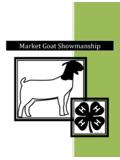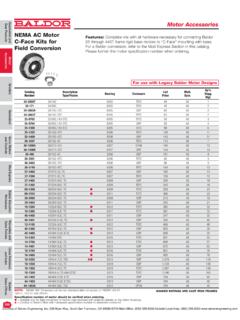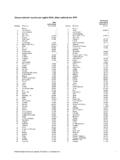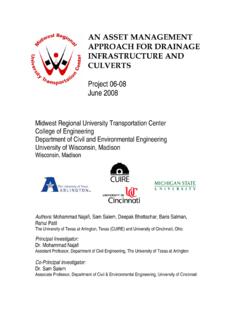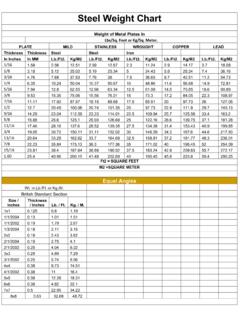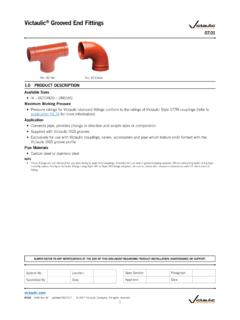Transcription of In This Issue: SPINACH DOWNY MILDEW: NEW RACE FOUND …
1 In this Issue: SPINACH DOWNY mildew : New Race FOUND in 2008 Phosphorus Fertilizer Management for Lettuce Production and Water Quality ProtectionFusarium Wilt of CilantroOrganic Soil Fertility Management SymposiumNew Additions to the ANR CatalogNovember/December, 2008 University of California, Department of Agri-culture, and County of Monterey cooperating(Cont d to page 2)Based on preliminary research fi ndings, it appears that yet another new race of DOWNY mildew has occurred on SPINACH grown in coastal California. In July 2008, outbreaks of DOWNY mildew appeared on several cultivars that previously had been resistant to races 1 through 10.
2 Throughout the late summer period, DOWNY mildew disease was frequently FOUND on these cultivars, and in some cases signifi cant losses were experienced. The disease continues to be a concern as late season (September and October) DOWNY mildew fl are-ups are presently taking place. DOWNY mildew , caused by the pathogen Peronospora farinosa f. sp. spinaciae, continues to be the most important disease of SPINACH in California. this fungus-like organism causes the familiar light green to yellow spots and patches on leaves, rendering the SPINACH leaf unmar-ketable. The characteristic purple sporulation occurs mostly on the undersides of leaves.
3 The pathogen needs cool, humid conditions to grow and develop. Managing DOWNY mildew relies on the use of resistant SPINACH cultivars and application of fungicides. To distinguish DOWNY mildew races, a set of 10 international differential SPINACH cultivars are grown and inoculated with the sample mildew . The race is identifi ed based on which cultivars are susceptible and develop disease. Inoculations with multiple fi eld isolates collected in the summer of 2008 indicated that the current outbreak of DOWNY mildew was caused by strains infecting 4 of the 10 international differential cultivars: Virofl ay, Resistofl ay, Bolero, and Lazio (Table 1).
4 this disease fi ngerprint is unique from all ten previously characterized races. Strains with this reaction profi le have been FOUND in multiple locations in California and Yuma, more effectively communicate worldwide information about DOWNY mildew on SPINACH and facilitate screening and characterizing of resistance, the International Working Group Perono-spora committee (IWGP) was formed several years ago to establish criteria for naming new races. Jim Correll (University of Arkansas) has been in communication with the IWGP to dis-cuss the current California situation. Presently, the general consensus of the committee is that the new race should not yet be offi cially named until further information is available regarding disease development and stability of the race.
5 The SPINACH industry should continue to be vigilant and aware of any unusual DOWNY mildew developments. The UC Cooperative Extension diagnostic lab continues to analyze SPINACH DOWNY mildew isolates submitted from growers, PCAs, and others. this service acts as a gauge of the DOWNY mildew situation and an early warning system should new races occur. Research on SPINACH DOWNY mildew in California is a joint project between the University of California Cooperative Extension and the University of DOWNY mildew : NEW RACE FOUND IN 2008 Steven Koike, University of California Cooperative ExtensionJim Correll, University of Arkansaspage 2(Cont d from page 1)(Cont d to page 3)T able 1.
6 D isease reactions of a 2008 DOWNY mildew isolate inoculated onto SPINACH differentials Cotyledons True leaves Percent plantsCultivarPercent infected Severity Percent infected SeverityinfectedViroflay100381. 22100 Resistoflay10031002. 6100 Califlay0000 0 Polka0000 0 Bolero10031002. 4100 Lion0000 0 Lazio1002. 71001. 4100 Campania0000 0 Dolphin0000 0 Avenger0000 0M ean di sease sev eri ty on cotyl edons i s on a scal e of 0 to 3, based on the cotyl edon area i nf ected and the degr ee of sporul ati ean di seas e sev er i ty of tr ue l eav es i s on a scal e of 0 to 4, wher e 0 = no di sease,1 = 1-25% leaf area i nfected, 2 =26-50%, 3 = 51-75%, and 4 = >76-100%.
7 A dapted from: C orrell and K oike. 2008. C alifornia S pinach G rowers R esearch F und. Sept. apparently new race of mildew occurred in summer management will continue to rely on resistant SPINACH leaf infected with DOWNY 3(Cont d to page 4)(Cont d from page 2)Background: Phosphorus (P) fertilization practices in vegetable production have changed recently due to the dramatic rise in the price of P fertilizer. In addition, regulatory pressure from the Regional Water Quality Control Boards to reduce nutrient concentration in surface water is also building. In the Salinas Valley, phosphorus is commonly applied in excess of vegetable crop needs and has increased soil P levels.
8 Table 1 compares adjacent sites (within mile of each other) in the Salinas Valley with different management histories and illustrates the impact of man-agement practices on soil P levels. The pasture area has the lowest P inputs and the lowest soil P value; the research station has had moderate amounts of P fertilization over the years and has an intermediate soil P level; and the soil in the production fi eld has had fertilization practices typi-cal for cool season vegetable production in the area and has high soil P. Phosphorus fertilization of crops in the Salinas Valley has unwittingly built up soil phosphorus levels in the valley (Table 2).
9 The common P levels FOUND in Salinas Valley soils can lead to elevated levels of phosphorus in drainage waters, creeks and rivers and seriously reduce water quality. Parts of the Salinas and Pajaro River watersheds have been placed on the Environmental Protection Agency 303(d) list due to excessive nutrient concentration. Phosphorus is a critical element for plant growth. Its availability is related to soil temperature, soil pH, sorption on clay and iron oxides, and interactions with secondary soil minerals such as calcium and iron phosphates. These factors generally keep phosphate in the soil solution at low levels.
10 However, in heavily fertilized fi elds P absorption sites can become overloaded, and envi-ronmentally problematic amounts of P can leave such fi elds in runoff; in extreme cases even drain tile effl uent can have high P concentrations. When fi eld runoff has high sediment content, large amounts of sediment-bound P can also enter the river systems. 2. Tray of SPINACH differentials showing two resistant cultivars. PHOSPHORUS FERTILIZER MANAGEMENT FOR LETTUCE PRODUCTION AND WATER QUALITY PROTECTIONU niversity of California Cooperative Extension, Monterey CountyRichard Smith and Tim Hartz, Farm Advisor for Monterey, Santa Cruz and San Benito Counties, and Extension Vegetable Specialist, UC, DavisPhosphorus fertilization of crops in the Salinas Valley has unwittingly built up soil phosphorus lev-els in the valley page 4(Cont d to page 5)(Cont d from page 3)The Olsen (bicarbonate extractable) P soil test provides the best measure of available P for crop growth in soils above pH.

